#cyanoacrylate adhesives
Explore tagged Tumblr posts
Text
Choosing the right adhesive for industrial applications is essential for project success. Learn about different adhesive types, key selection factors, and best practices to ensure efficiency and durability. Explore A-Gas Electronic Materials' expert advice and high-quality solutions.
#industrial adhesives#epoxy adhesives#polyurethane adhesives#acrylic adhesives#silicone adhesives#cyanoacrylate adhesives#material compatibility#bonding strength#curing time#adhesive application methods#health and safety in adhesives#A-Gas Electronic Materials#UK industrial adhesives#industrial bonding solutions
0 notes
Text
I Am An Ostomate...
For those of you that aren't familiar with this term, you might recognize it if you know what a colostomy bag is which is similar to what I have which is an illeostomy.
Early last year I had rushed colon surgery which left me with an ileostomy. A colostomy is for the large intestine and an ileostomy is for the small intestine. I have an ileostomy because they removed most of my large intestine.
I was told that the ostomy (general term ileostomy, colostomy etc.) was temporary, but due to complications I am going into a year of having it. The complications of having an ostomy can be rather stressful at times not to mention expensive!
I have a great wound care nurse that actually fought to get me the supplies I needed. Now, to understand this, my insurance does cover what I need, but only so much per month. When leaking issues are rampant and your quickly exhaust what supplies you have long before your next shipment... things can get expensive. Thankfully I had tax money to help then I was able to go back to work which also helped.
I was given a basic overview of ostomies while in the husband, but as time went on I realized, too late, that there was a lot more to know. I won't go into detail, but I feel like a person that has an ostomy for the first time needs to be given much more an education! Almost a year in and I realized that what I thought was a weird should strap for a travel kit was in fact an ostomy belt. I knew about ostomy belts from early on, but when looking them up they looked completely different.
Growing up my grandmother had a colostomy bag which minorly prepared me for having an ileostomy which I don't think is much different from having a colostomy. I knew about burping your bag which is a lot more convenient with the Hollister snap on kind. Originally I would hold the bottom of the bag upwards to then open it and press the gas out of the bag or if I have to I will open the bottom over a toilet and press the gas out that way. With the Hollister strapon kind all I have to do is unsnap a small portion of it and if need be press the gas out, but it usually comes out pretty well.
Not until here in the last few months have I really had an issue with skin irritation or rather erosion as what I assumed was stomach acid present in the stool would eat away at the skin around the stoma (I feel like I'll have to do another post specifically about these terms etc, but the stoma is the part of the intestine thats exposed... basically it refers to your new butthole). This can be very unpleasant, but I was given some miconazole powder (antifungal) to use any redness. In other words, use it before it gets bad. It does work.
Shortly before Thanksgiving I was admitted into the hospital due to a severe case of skin irritation possibly an infection. The doctor and nurse both said they don't if it was due to an infection or just irritation, but they put me on antibiotics anyways and it did eventually heal up. I was having issues with the wafer sticking and I was going through supplies like crazy. It was like it was right after my second surgery when I was having to change my otomy up to five times a day! Needless to say that is not supposed to be the case! I didn't want to waste anymore supplies and it was over the weekend so wound care wasn't open and my surgeon's office wasn't available. I did what I thought was the best possible thing to do with what I had on hand... tape a grocery bag to my stomach. I am a bigger person so I could tuck half of the bag under my stomach and tape the upper half to me. Just over the course of three days, most of my stomach on that side become red and weepy. The weepiness is what was causing the wafer from sticking and it just got worse... I was finally able to get to the wound care on tuesday which she urged me to go the hospital that same day which I did. They kept me over night and released me the day before thanksgiving.
There were only two things that seemed to help with the weeping issue. The wound care nurse either used a skin protective barrier which kind of reminds me duoderm or this purple stuff (Marathon brand, its cyanoacrylate, a medical adhesive) which worked wonders, but is super expensive! Later on, I learned about crusting. Technically I learned it from the wound care nurse, but I thought crusting was dependent on the purple stuff. Crusting is where we take Brava powder and sprinkle it on to the affected area. Then we take protective barrier wipes and dab the area after brushing the excess powder off. Do this two to three times and a crust will begin to form. The powder will only stick to the areas it needs to stick to and dabbing rather than wiping ensures that the powder doesn't get wiped off but coated with the barrier liquid.
Having an ostomy is no fun, but it is manageable and even more so if you actually pay attention to what should be avoided. Early on I was told to avoid certain foods such as fruits with the peel on, mushrooms, seeds etc. That these things could cause a blockage which I assumed was in reference to intestinal blockages, but after learning about pancaking, I believe that might be the reason for it. You will notice that certain foods don't get fully digested and might seem to move right through you like it wasn't even touched! Chew all you want, but sometimes food slips by. The thicker the stool, the more it might build up at the stoma site causing it to eventually push through the barrier and come out from underneath the wafer... yeah, always a pleasant experience! The problem was that this would happen with liquids too. I've learned alot since getting my ostomy back in February of last year, but I feel like there is still things to learn and improvements to be made. For example, they really need to explain pancaking and why avoiding certain foods is necessary! For the longest time I didn't know that this little pack of deodorant they gave me was actually a lubricant to help things move down into the pouch. Early on I knew that there was deodorant items I could use if need be, but nothing about it being lubricant. I can't get this through my insurance while getting other things, but using a small amount of olive oil seems to help when leaking doesn't occur. I had so much leaking issues that I would leave an ostomy on for as long as possible reaching into a two week period! I, personally, don't think I have ever had to change an ostomy because it had been 3-7 days. Its always been because I had to change it due to leakage. I would even put large sheets of tape that I had leftover from wound care (the surgery incision) on to the areas surrounding the wafer to help contain any leaks and it helped! I ran out of the tape though and started using other medical tapes. I even thought about getting some adhesive like skin-tac or mastisol to try and re-seal the areas of the wafer that came lose either on their own or due to leakage. I've had times where the wafer won't even stick!
Going back to the grocery bag incident, which I am now going through the same thing again, but this time it was due to constant leaking. Not just Hollister, but Coloplast as well. The thing is that the ileal fluid (basically intestinal juices from the small intestine) cause skin irritation, because there was nothing there preventing it from getting on my skin, I tried several different things. I didn't think to tape it up, but first off I tried applying hand lotion. Why? It has oil in it and oil and water don't mix so I figured it would create an oil slick... I don't think it worked in the long run. To help dry up the area, I tried crusting, but it wouldn't dry for some reason and the liquid would just wash the powder away anyways. I'm trying to add miconazole powder this time to help kick any fungal infection in its butt. I read on a forum that some liquid antacid that is no longer being made could be used... I don't remember the name now, but it was like mylanta. I didn't some research and saw that this particular type had two ingredients that the others didn't have both of. There was also an inactive ingredient that the other didn't have. This form made it sound like it would dry up on the skin and the generic stuff I got did, but not on the weeping skin. I was looking for something to create a barrier, to dry the area up, but what went over my head was that it was an antacid and was primarily used to soothe the pain due to ileal fluid being acidic. Mylanta etc. neutralizes acids. Another source said to use hydrocortisone cream (ointments are more oily) and let it sit there undisturbed for about ten minutes. In that time it would dry up, but like the mylanta stuff would. Didn't work. There was also hydroclloidal sheets that I didn't try. No reason other than money.
Before wrapping this all up I want to state that I got a lot of help including many supplies from my wound care nurse (all of them were great at the clinic!) and multiple free samples and help from an individual at a local pharmacy. Yes, free samples! Now, I can't promise and will not promise that your pharmacy would do the same, but I think they just took an understanding to me. Given I've been through a lot and my age might have had a role to play. People usually notice the seemingly shocking fact that someone so young had colon surgery and has an ostomy. My next post op appointment is next month, but I'm going to see if my surgeon will do the surgery sooner than later despite the risks...
Have a good day and a blessed New Year!
#colon surgery#ileostomy#colostomy#ostomy#2023#stoma#miconazole powder#antifungal#skin irritation#Holister#duoderm#Marathon#marathon#cyanoacrylate#medical adhesive#skin protective barrier#pancaking#coloplast#hydrocortisone cream#lotion#hydrocollodial sheets
2 notes
·
View notes
Text
N-2-Butyl-Cyanoacrylate Adhesive Market, Global Outlook and Forecast 2025-2032
N-Butyl cyanoacrylate (n-BCA, NBCA) is a cyanoacrylate ester that serves as the butyl ester of 2-cyano-2-propenoic acid. It is a clear, colorless liquid with a sharp and irritating odor. Insoluble in water, n-BCA is primarily used as the main component in medical cyanoacrylate adhesives. These adhesives are widely recognized for their quick-setting properties and effectiveness in surgical applications, particularly in wound closure, tissue bonding, and sealing.
Market Size
Download FREE Sample of this Report @ https://www.statsmarketresearch.com/download-free-sample/8028080/global-nbutylcyanoacrylate-adhesive-forecast-2025-2032-463
The global N-2-Butyl-Cyanoacrylate Adhesive market was estimated at USD 173 million in 2024 and is projected to reach USD 295.03 million by 2032. This growth corresponds to a compound annual growth rate (CAGR) of 6.90% during the forecast period.
The increasing demand for innovative and effective medical adhesives in surgical and outdoor medical applications has been a major driver of this market's expansion.
In North America, the N-2-Butyl-Cyanoacrylate Adhesive market size was estimated at USD 50.57 million in 2024, with a CAGR of 5.91% expected between 2025 and 2032.
The region's growth is attributed to advancements in healthcare infrastructure, increasing surgical procedures, and the adoption of advanced adhesive solutions for medical purposes.

Market Dynamics (Drivers, Restraints, Opportunities, and Challenges)
Drivers
Rising Demand in Surgical Applications: N-2-Butyl-Cyanoacrylate Adhesives are increasingly preferred for wound closure and tissue bonding due to their non-invasive nature and fast-curing properties.
Growing Healthcare Industry: The expanding global healthcare sector, particularly in developing economies, has bolstered the demand for medical adhesives.
Technological Advancements: Continuous innovation in adhesive formulations has enhanced their application in complex surgical procedures.
Rising Demand in Surgical Applications: N-2-Butyl-Cyanoacrylate Adhesives are increasingly preferred for wound closure and tissue bonding due to their non-invasive nature and fast-curing properties.
Growing Healthcare Industry: The expanding global healthcare sector, particularly in developing economies, has bolstered the demand for medical adhesives.
Technological Advancements: Continuous innovation in adhesive formulations has enhanced their application in complex surgical procedures.
Restraints
High Production Costs: The cost of raw materials and manufacturing processes for high-quality adhesives poses a challenge.
Limited Awareness in Emerging Economies: Despite their benefits, lack of awareness about medical adhesives in certain regions restricts market penetration.
High Production Costs: The cost of raw materials and manufacturing processes for high-quality adhesives poses a challenge.
Limited Awareness in Emerging Economies: Despite their benefits, lack of awareness about medical adhesives in certain regions restricts market penetration.
Opportunities
Emerging Markets: Untapped potential in regions like Asia-Pacific and South America offers significant growth opportunities.
Expansion in Non-Medical Applications: The versatility of n-BCA adhesives can open doors for use in other industries such as construction and electronics.
Emerging Markets: Untapped potential in regions like Asia-Pacific and South America offers significant growth opportunities.
Expansion in Non-Medical Applications: The versatility of n-BCA adhesives can open doors for use in other industries such as construction and electronics.
Challenges
Stringent Regulations: Compliance with healthcare and medical product regulations can be complex and costly.
Competition from Alternatives: Other adhesive technologies and surgical products may pose competition.
Stringent Regulations: Compliance with healthcare and medical product regulations can be complex and costly.
Competition from Alternatives: Other adhesive technologies and surgical products may pose competition.
Regional Analysis
North America
North America dominates the global market, driven by a well-established healthcare sector and the increasing prevalence of surgical procedures. The United States, in particular, holds the largest market share within this region.
Europe
Europe is another key market for N-2-Butyl-Cyanoacrylate Adhesives, supported by robust healthcare systems and high demand for advanced medical adhesives in countries like Germany, the UK, and France.
Asia-Pacific
The Asia-Pacific region is expected to witness the highest CAGR during the forecast period. Rapidly growing healthcare infrastructure, increasing awareness, and rising medical tourism in countries like China, India, and South Korea are fueling market growth.
South America
In South America, Brazil and Argentina are key contributors to market expansion due to improvements in healthcare facilities and increased adoption of medical adhesives.
Middle East and Africa
This region is experiencing moderate growth, driven by investments in healthcare infrastructure in countries such as Saudi Arabia and South Africa.
Competitor Analysis
Key Players
The global N-2-Butyl-Cyanoacrylate Adhesive market is characterized by intense competition among key players. The following companies hold a significant market share:
Medtronic: A leader in medical technology and healthcare solutions, offering high-quality adhesive products.
B. Braun: Renowned for its innovative medical devices and healthcare products.
Compont Medical Devices: Focused on manufacturing advanced medical adhesives.
GluStitch Inc: Specializes in cyanoacrylate adhesives for medical and veterinary applications.
Cartell Chemical: A key player in the adhesive industry with a diversified product portfolio.
Advanced Medical Solutions (Plymouth): Offers a range of surgical and wound care products, including cyanoacrylate adhesives.
Medtronic: A leader in medical technology and healthcare solutions, offering high-quality adhesive products.
B. Braun: Renowned for its innovative medical devices and healthcare products.
Compont Medical Devices: Focused on manufacturing advanced medical adhesives.
GluStitch Inc: Specializes in cyanoacrylate adhesives for medical and veterinary applications.
Cartell Chemical: A key player in the adhesive industry with a diversified product portfolio.
Advanced Medical Solutions (Plymouth): Offers a range of surgical and wound care products, including cyanoacrylate adhesives.
Market Segmentation (by Application)
Surgical
The largest application segment, driven by the widespread use of n-BCA adhesives in surgeries for wound closure, tissue bonding, and sealing. Their non-invasive nature and quick-setting properties make them ideal for medical use.
Outdoor Medical
This segment includes applications in emergency medical services and first-aid scenarios. The adhesive’s rapid curing time and durability make it suitable for outdoor medical applications.
Others
Other applications include veterinary medicine and research purposes.
Market Segmentation (by Type)
5ml
5ml packaging is ideal for small-scale applications and single-use scenarios, commonly utilized in outpatient and emergency care.
7ml
Preferred for medium-scale applications, particularly in surgical settings requiring a moderate amount of adhesive.
8ml
Designed for larger-scale procedures, the 8ml type caters to extensive surgical applications.
Other
Includes specialized packaging for unique or custom applications.
Key Company
The market is dominated by companies such as Medtronic, B. Braun, Compont Medical Devices, GluStitch Inc, Cartell Chemical, and Advanced Medical Solutions (Plymouth). These organizations focus on innovation, product development, and strategic partnerships to maintain their competitive edge.
Geographic Segmentation
North America
USA
Canada
Mexico
USA
Canada
Mexico
Europe
Germany
UK
France
Russia
Italy
Rest of Europe
Germany
UK
France
Russia
Italy
Rest of Europe
Asia-Pacific
China
Japan
South Korea
India
Southeast Asia
Rest of Asia-Pacific
China
Japan
South Korea
India
Southeast Asia
Rest of Asia-Pacific
South America
Brazil
Argentina
Columbia
Rest of South America
Brazil
Argentina
Columbia
Rest of South America
The Middle East and Africa
Saudi Arabia
UAE
Egypt
Nigeria
South Africa
Rest of MEA
Saudi Arabia
UAE
Egypt
Nigeria
South Africa
Rest of MEA
FAQ Section
What is the current market size of the N-2-Butyl-Cyanoacrylate Adhesive market?
The global market size was estimated at USD 173 million in 2024 and is projected to reach USD 315.39 million by 2032, growing at a CAGR of 6.90%.
The global market size was estimated at USD 173 million in 2024 and is projected to reach USD 315.39 million by 2032, growing at a CAGR of 6.90%.
Which are the key companies operating in the N-2-Butyl-Cyanoacrylate Adhesive market?
Key companies include Medtronic, B. Braun, Compont Medical Devices, GluStitch Inc, Cartell Chemical, and Advanced Medical Solutions (Plymouth).
Key companies include Medtronic, B. Braun, Compont Medical Devices, GluStitch Inc, Cartell Chemical, and Advanced Medical Solutions (Plymouth).
What are the key growth drivers in the N-2-Butyl-Cyanoacrylate Adhesive market?
The primary drivers include rising demand in surgical applications, growth in the healthcare sector, and technological advancements in adhesive formulations.
The primary drivers include rising demand in surgical applications, growth in the healthcare sector, and technological advancements in adhesive formulations.
Which regions dominate the N-2-Butyl-Cyanoacrylate Adhesive market?
North America leads the market, followed by Europe and Asia-Pacific. Asia-Pacific is expected to experience the highest growth rate.
North America leads the market, followed by Europe and Asia-Pacific. Asia-Pacific is expected to experience the highest growth rate.
What are the emerging trends in the N-2-Butyl-Cyanoacrylate Adhesive market?
Emerging trends include the expansion of applications beyond medical uses, increased adoption in emerging markets, and advancements in adhesive technologies.
Emerging trends include the expansion of applications beyond medical uses, increased adoption in emerging markets, and advancements in adhesive technologies.
Key Benefits of This Market Research:
Industry drivers, restraints, and opportunities covered in the study
Neutral perspective on the market performance
Recent industry trends and developments
Competitive landscape & strategies of key players
Potential & niche segments and regions exhibiting promising growth covered
Historical, current, and projected market size, in terms of value
In-depth analysis of the N-2-Butyl-Cyanoacrylate Adhesive Market
Overview of the regional outlook of the N-2-Butyl-Cyanoacrylate Adhesive Market:
Industry drivers, restraints, and opportunities covered in the study
Neutral perspective on the market performance
Recent industry trends and developments
Competitive landscape & strategies of key players
Potential & niche segments and regions exhibiting promising growth covered
Historical, current, and projected market size, in terms of value
In-depth analysis of the N-2-Butyl-Cyanoacrylate Adhesive Market
Overview of the regional outlook of the N-2-Butyl-Cyanoacrylate Adhesive Market:
Key Reasons to Buy this Report:
Access to date statistics compiled by our researchers. These provide you with historical and forecast data, which is analyzed to tell you why your market is set to change
This enables you to anticipate market changes to remain ahead of your competitors
You will be able to copy data from the Excel spreadsheet straight into your marketing plans, business presentations, or other strategic documents
The concise analysis, clear graph, and table format will enable you to pinpoint the information you require quickly
Provision of market value data for each segment and sub-segment
Indicates the region and segment that is expected to witness the fastest growth as well as to dominate the market
Analysis by geography highlighting the consumption of the product/service in the region as well as indicating the factors that are affecting the market within each region
Competitive landscape which incorporates the market ranking of the major players, along with new service/product launches, partnerships, business expansions, and acquisitions in the past five years of companies profiled
Extensive company profiles comprising of company overview, company insights, product benchmarking, and SWOT analysis for the major market players
The current as well as the future market outlook of the industry concerning recent developments which involve growth opportunities and drivers as well as challenges and restraints of both emerging as well as developed regions
Includes in-depth analysis of the market from various perspectives through Porter
Access to date statistics compiled by our researchers. These provide you with historical and forecast data, which is analyzed to tell you why your market is set to change
This enables you to anticipate market changes to remain ahead of your competitors
You will be able to copy data from the Excel spreadsheet straight into your marketing plans, business presentations, or other strategic documents
The concise analysis, clear graph, and table format will enable you to pinpoint the information you require quickly
Provision of market value data for each segment and sub-segment
Indicates the region and segment that is expected to witness the fastest growth as well as to dominate the market
Analysis by geography highlighting the consumption of the product/service in the region as well as indicating the factors that are affecting the market within each region
Competitive landscape which incorporates the market ranking of the major players, along with new service/product launches, partnerships, business expansions, and acquisitions in the past five years of companies profiled
Extensive company profiles comprising of company overview, company insights, product benchmarking, and SWOT analysis for the major market players
The current as well as the future market outlook of the industry concerning recent developments which involve growth opportunities and drivers as well as challenges and restraints of both emerging as well as developed regions
Includes in-depth analysis of the market from various perspectives through Porter
Get the Complete Report & TOC @ https://www.statsmarketresearch.com/global-nbutylcyanoacrylate-adhesive-forecast-2025-2032-463-8028080
Table of content
Table of Contents 1 Research Methodology and Statistical Scope 1.1 Market Definition and Statistical Scope of N-2-Butyl-Cyanoacrylate Adhesive 1.2 Key Market Segments 1.2.1 N-2-Butyl-Cyanoacrylate Adhesive Segment by Type 1.2.2 N-2-Butyl-Cyanoacrylate Adhesive Segment by Application 1.3 Methodology & Sources of Information 1.3.1 Research Methodology 1.3.2 Research Process 1.3.3 Market Breakdown and Data Triangulation 1.3.4 Base Year 1.3.5 Report Assumptions & Caveats 2 N-2-Butyl-Cyanoacrylate Adhesive Market Overview 2.1 Global Market Overview 2.1.1 Global N-2-Butyl-Cyanoacrylate Adhesive Market Size (M USD) Estimates and Forecasts (2019-2032) 2.1.2 Global N-2-Butyl-Cyanoacrylate Adhesive Sales Estimates and Forecasts (2019-2032) 2.2 Market Segment Executive Summary 2.3 Global Market Size by Region 3 N-2-Butyl-Cyanoacrylate Adhesive Market Competitive Landscape 3.1 Global N-2-Butyl-Cyanoacrylate Adhesive Sales by Manufacturers (2019-2025) 3.2 Global N-2-Butyl-Cyanoacrylate Adhesive Revenue Market Share by Manufacturers (2019-2025) 3.3 N-2-Butyl-Cyanoacrylate Adhesive Market Share by Company Type (Tier 1, Tier 2, and Tier 3) 3.4 Global N-2-Butyl-Cyanoacrylate Adhesive Average Price by Manufacturers (2019-2025) 3.5 Manufacturers N-2-Butyl-Cyanoacrylate Adhesive Sales Sites, Area Served, Product Type 3.6 N-2-Butyl-Cyanoacrylate Adhesive Market Competitive Situation and Trends 3.6.1 N-2-Butyl-Cyanoacrylate Adhesive Market Concentration Rate 3.6.2 Global 5 and 10 Largest N-2-Butyl
Customize/Section/Part Purchase @ https://www.statsmarketresearch.com/chapters-purchase/8028080/global-nbutylcyanoacrylate-adhesive-forecast-2025-2032-463
CONTACT US: 276 5th Avenue, New York, NY 10001, United States International: +1(646)-781-7170 / +91 8087042414 Check other links >>> https://www.linkedin.com/feed/update/urn:li:activity:7287737781894737923 https://www.linkedin.com/feed/update/urn:li:activity:7287748171135356929 https://www.linkedin.com/feed/update/urn:li:activity:7287759356140384256 https://www.linkedin.com/feed/update/urn:li:activity:7287769156207153153 https://www.linkedin.com/feed/update/urn:li:activity:7287779954430255105
0 notes
Text
Disposable And Reusable Mask Market: Exploring Trends in Personal Protective Equipment
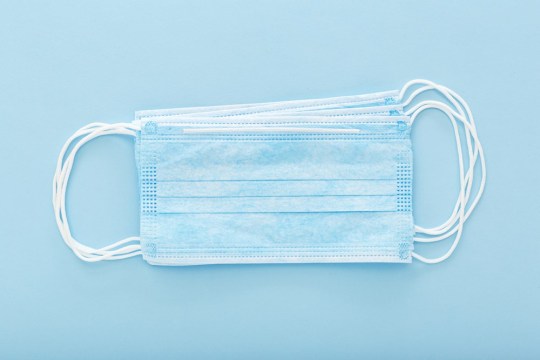
The Disposable and Reusable Mask Market encompasses a critical segment within the broader personal protective equipment (PPE) industry. Masks, whether disposable or reusable, have gained immense importance due to their role in mitigating the spread of airborne diseases, such as the COVID-19 pandemic. This market primarily revolves around face masks designed to protect individuals from inhaling potentially harmful particles, bacteria, or viruses. Here, we will delve into the essential aspects, including the market's definition, overview, scope, growth factors, industry dynamics, and prevailing trends.
Definition: The Disposable and Reusable Mask Market refers to the global marketplace for face masks, covering disposable and reusable variants. Disposable masks are typically single-use and designed to be discarded after a single wear, while reusable masks can be worn multiple times, often after washing or sanitization. These masks serve as a crucial tool in reducing the transmission of infectious diseases and safeguarding the health of individuals.
Market Overview & Scope: The disposable and reusable mask market scope is extensive, encompassing a wide range of applications across various sectors, including healthcare, industrial, and everyday consumer use. Healthcare institutions, such as hospitals and clinics, extensively use both disposable and reusable masks to protect healthcare workers and patients. Additionally, the general population has adopted mask-wearing as a preventive measure during public health crises. The market also extends to industrial settings where workers rely on masks for respiratory protection.
Market Growth: The Disposable and Reusable Mask Market has witnessed robust growth in recent years, driven by factors such as the COVID-19 pandemic, increasing pollution levels, and heightened awareness of respiratory health. The pandemic, in particular, led to an unprecedented surge in demand for disposable masks. However, reusable masks also gained prominence due to their sustainability and cost-effectiveness. This market's growth is expected to continue as mask-wearing becomes a more integral part of daily life and industrial safety protocols.
Market Industry: The mask industry comprises a wide array of manufacturers, ranging from large multinational corporations to small-scale producers. These manufacturers produce masks in various materials, designs, and specifications to cater to diverse customer needs. The industry is characterized by innovations in mask design, filtration technologies, and the integration of antimicrobial features to enhance protection.
Trends: Several notable trends are shaping the Disposable and Reusable Mask Market. These include the growing adoption of eco-friendly materials for mask production, the development of smart masks with integrated technology, and an increasing emphasis on style and comfort in mask design. Sustainable practices, such as recycling programs for disposable masks, are becoming more common, reflecting the growing environmental consciousness of consumers.
In conclusion, the Disposable and Reusable Mask Market plays a pivotal role in safeguarding public health, with a vast scope that spans healthcare, industrial, and everyday use. Its growth is being fueled by global health crises, environmental concerns, and ongoing innovations in mask design and technology. The industry's ability to adapt to evolving customer preferences and emerging health challenges will be instrumental in shaping its future trajectory.
#2-Octyl Cyanoacrylate Adhesives Market#2-Octyl Cyanoacrylate Adhesives Market Growth#2-Octyl Cyanoacrylate Adhesives Market Trends
0 notes
Text
largely nonmetallic robot girl. intricate ceramic parts and tough plastic springs, rubber-fiber muscles; decorated both externally and internally with intricate engraving, glaze, enamel, and lacquerwork of various styles. A bionic brain built from stacks upon stacks of glass lenses carefully assembled on a frame and held in place with cyanoacrylate adhesive, all surrounding a large brain-esque sculpted glass vessel filled with some mysterious clear perfume/oil and a floating crystal sphere in the center.
209 notes
·
View notes
Text
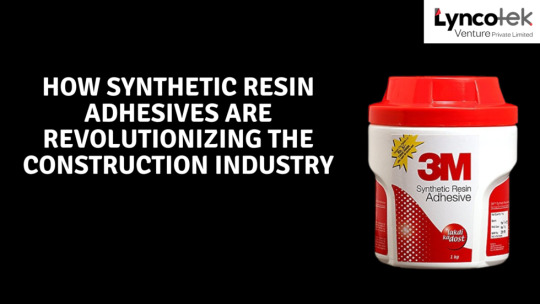
Introduction to Synthetic Resin Adhesives
The building business was completely transformed by the introduction of Synthetic Resin Adhesives. These adhesives are effective in packing, long-lasting, and multipurpose. They consist of several chemicals. These days, resin-based products are a necessary part of modern manufacturing and may be found in everything from high-end to bulky packaging.
Types of Synthetic Resin Adhesives
Epoxy Resin Adhesives
Epoxy resin adhesives are renowned for having outstanding bond strength and resilience to abrasive environments. Applications needing strong adhesion and structural stability, such joined concrete, metal, and plastic, frequently employ it.
Polyurethane Adhesives
Because polyurethane adhesive is so strong and flexible, it’s perfect for packaging that comes in different widths. It is used in construction for joint coverings and wood fastening to various components.
Acrylic Adhesives
Acrylic adhesives are frequently used in construction to assemble furniture, affix decorative panels, and make windows. They are prized for their quick speed and strong adherence to a variety of materials, including metal, glass, and ceramics.
Cyanoacrylate Adhesives
Super glue, or cyanoacrylate adhesives, are thought to be advantageous due to its quick cure and great resilience. In construction, it is widely used to bind small pieces, repair cracks, and fuse soft materials together.

Properties of Synthetic Resin Adhesives
Resin-based adhesives exhibit several key characteristics that make them ideally suited for construction applications.
Strength
One of the number one blessings of artificial resin adhesives is their exquisite bonding strength, which allows them to create robust connections among numerous materials.
Durability
Synthetic resin adhesives are recognized for their sturdiness, resisting degradation from exposure to moisture, chemical compounds, and environmental elements over time.
Flexibility
Many synthetic resin adhesives offer flexibility, permitting them to resist the stresses of motion and vibration with out dropping their bond energy.
Resistance to Moisture and Chemicals
It is common for synthetic resin adhesives to be designed to withstand chemical exposure and moisture, which qualifies them for usage in outdoor and industrial settings.
��Applications in the Construction Industry
Synthetic resin adhesives locate several packages in the construction industry, ranging from bonding materials to structural repairs.
Bonding Materials
Synthetic resin adhesives are used to bond a wide variety of substances, together with timber, metal, concrete, and plastic, permitting the construction of long lasting and resilient systems.
Structural Repairs
In cases in which traditional creation techniques are impractical or costly, artificial resin adhesives can be used to restore and toughen current systems quick and efficaciously.

Flooring Installation
Synthetic resin adhesives are typically used in floors set up, imparting a robust and dependable bond between the floors material and the substrate.

Wall Paneling
Synthetic resin adhesives are used to connect wall panels and decorative factors, supplying a steady and aesthetically pleasing end to indoors areas.

Advantages of Synthetic Resin Adhesives
In many production processes, synthetic resin adhesives are the favored choice due to their numerous advantages over traditional bonding methods.
Fast Curing Time
Synthetic resin adhesives usually have a fast curing time, bearing in mind rapid assembly and set up of production additives.
High Strength
Synthetic resin adhesives provide high bond electricity, making sure the structural integrity and sturdiness of constructed factors.
Versatility
Synthetic resin adhesives can bond a wide variety of materials together, imparting versatility and versatility in creation initiatives.
Resistance to Environmental Factors
Synthetic resin adhesives are resistant to moisture, chemicals, and other environmental factors, making them suitable for use in diverse climatic conditions.
Real-Life Applications
Several case studies highlight the effectiveness and flexibility of synthetic resin adhesives in production tasks international.
Challenges and Limitations
Despite their many advantages, artificial resin adhesives additionally face demanding situations and limitations, such as restricted temperature tolerance and capacity health risks in the course of software.
Future Trends and Innovations
The destiny of artificial resin adhesives in the construction enterprise looks promising, with ongoing research and improvement targeted on improving their overall performance, sustainability, and safety.
Conclusion
In conclusion, synthetic resin adhesives have revolutionized the development enterprise by way of supplying superior bonding energy, durability, and versatility. From bonding materials to structural maintenance, those adhesives play a crucial role in cutting-edge creation practices, paving the manner for innovative and sustainable constructing solutions.
Unique FAQs
Are synthetic resin adhesives suitable for outdoor applications?
How do synthetic resin adhesives compare to traditional adhesives?
What safety precautions should be taken when using synthetic resin adhesives?
Can synthetic resin adhesives be used underwater?
Are there eco-friendly alternatives to synthetic resin adhesives?
#synthetic resin adhesives#construction adhesives#acrylic adhesive#industrial adhesives#flooring installation#adhesive properties#durability#polyurethane adhesive
2 notes
·
View notes
Note
i kind of....i kind of want to know what the other boys are as types of glue now. please bestow your wisdom 🎤
😭😂
i got u
Alexei - Craft glue: "This water-based glue has zero to low toxicity, which makes it safe for use by both kids and adults."
Brooklyn - Glue stick: "It dries rapidly after application and is quite user-friendly both in terms of handling and cleaning."
Leo - Super glue: "At its core, super glue is a cyanoacrylate adhesive known for its quick adhesion and ability to form super strong bonds with a clean, dry finish."
Milo - Epoxy: "They are a viable option for household repairs as they can hold up in extreme conditions"
Rory - Hot glue: "Hot glue is referred to those adhesives that are available in a solidified form and must be heated before use."
Tobias - Glue dots: "These sticky dots can be conveniently put anywhere, and the best part is that they are removable"
26 notes
·
View notes
Text
How Synthetic Resin Adhesives Are Revolutionizing the Construction Industry
Introduction to Synthetic Resin Adhesives
The building business was completely transformed by the introduction of Synthetic Resin Adhesives. These adhesives are effective in packing, long-lasting, and multipurpose. They consist of several chemicals. These days, resin-based products are a necessary part of modern manufacturing and may be found in everything from high-end to bulky packaging.
Types of Synthetic Resin Adhesives
Epoxy Resin Adhesives
Epoxy resin adhesives are renowned for having outstanding bond strength and resilience to abrasive environments. Applications needing strong adhesion and structural stability, such joined concrete, metal, and plastic, frequently employ it.
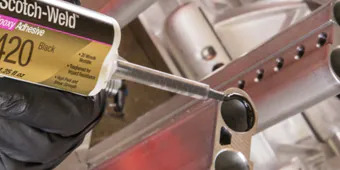
Polyurethane Adhesives
Because polyurethane adhesive is so strong and flexible, it’s perfect for packaging that comes in different widths. It is used in construction for joint coverings and wood fastening to various components.

Acrylic Adhesives
Acrylic adhesives are frequently used in construction to assemble furniture, affix decorative panels, and make windows. They are prized for their quick speed and strong adherence to a variety of materials, including metal, glass, and ceramics.
Cyanoacrylate Adhesives
Super glue, or cyanoacrylate adhesives, are thought to be advantageous due to its quick cure and great resilience. In construction, it is widely used to bind small pieces, repair cracks, and fuse soft materials together.

Properties of Synthetic Resin Adhesives
Resin-based adhesives exhibit several key characteristics that make them ideally suited for construction applications.
Strength
One of the number one blessings of artificial resin adhesives is their exquisite bonding strength, which allows them to create robust connections among numerous materials.
Durability
Synthetic resin adhesives are recognized for their sturdiness, resisting degradation from exposure to moisture, chemical compounds, and environmental elements over time.
Flexibility
Many synthetic resin adhesives offer flexibility, permitting them to resist the stresses of motion and vibration with out dropping their bond energy.
Resistance to Moisture and Chemicals
It is common for synthetic resin adhesives to be designed to withstand chemical exposure and moisture, which qualifies them for usage in outdoor and industrial settings.
Applications in the Construction Industry
Synthetic resin adhesives locate several packages in the construction industry, ranging from bonding materials to structural repairs.
Bonding Materials
Synthetic resin adhesives are used to bond a wide variety of substances, together with timber, metal, concrete, and plastic, permitting the construction of long lasting and resilient systems.
Structural Repairs
In cases in which traditional creation techniques are impractical or costly, artificial resin adhesives can be used to restore and toughen current systems quick and efficaciously.

Flooring Installation
Synthetic resin adhesives are typically used in floors set up, imparting a robust and dependable bond between the floors material and the substrate.

Wall Paneling
Synthetic resin adhesives are used to connect wall panels and decorative factors, supplying a steady and aesthetically pleasing end to indoors areas.

Advantages of Synthetic Resin Adhesives
In many production processes, synthetic resin adhesives are the favored choice due to their numerous advantages over traditional bonding methods.
Fast Curing Time
Synthetic resin adhesives usually have a fast curing time, bearing in mind rapid assembly and set up of production additives.
High Strength
Synthetic resin adhesives provide high bond electricity, making sure the structural integrity and sturdiness of constructed factors.
Versatility
Synthetic resin adhesives can bond a wide variety of materials together, imparting versatility and versatility in creation initiatives.
Resistance to Environmental Factors
Synthetic resin adhesives are resistant to moisture, chemicals, and other environmental factors, making them suitable for use in diverse climatic conditions.
Real-Life Applications
Several case studies highlight the effectiveness and flexibility of synthetic resin adhesives in production tasks international.
Challenges and Limitations
Despite their many advantages, artificial resin adhesives additionally face demanding situations and limitations, such as restricted temperature tolerance and capacity health risks in the course of software.
Future Trends and Innovations
The destiny of artificial resin adhesives in the construction enterprise looks promising, with ongoing research and improvement targeted on improving their overall performance, sustainability, and safety.
Conclusion
In conclusion, synthetic resin adhesives have revolutionized the development enterprise by way of supplying superior bonding energy, durability, and versatility. From bonding materials to structural maintenance, those adhesives play a crucial role in cutting-edge creation practices, paving the manner for innovative and sustainable constructing solutions.
4 notes
·
View notes
Text
Pffff ok I'm glueing together corners today and that's reminded me of the Adhesive Assessment I had to do in the first year of my masters, where we had to do an extensive Tees Test of a range of glues and adhesives then identify an unknown adhesive using those test results
Except the unknown adhesive was superglue so I just sniffed it and went 'yeah that's cyanoacrylate, don't bother with the tests that's so obviously superglue, don't need a Tees Diagram for this one is blatantly superglue'
Turns out I was totally right, don't doubt my sense of smell
8 notes
·
View notes
Text
A Tutorial for Making Pens with Crepe Myrtle Burl Pen Blanks
Introduction
In the field of handmade workmanship, creating one-of-a-kind and personalized things is very appealing. Making your own pen with Crepe Myrtle Burl pen blanks allows you to learn about woodworking while also creating unique and visually appealing writing instruments. This guide will walk you through the steps of changing Crepe Myrtle Burl pen blanks into a beautiful and useful pen.
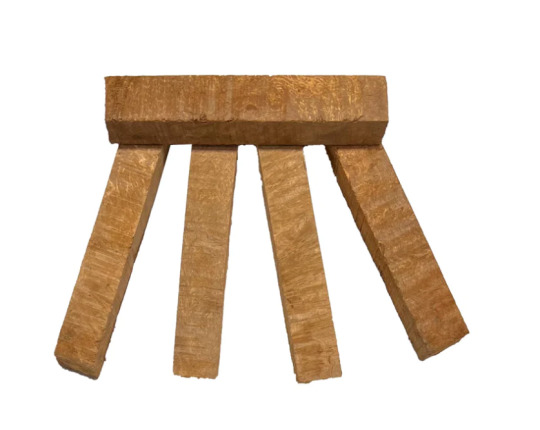
Understanding crepe myrtle burls:
Crepe myrtle is a gorgeous ornamental shrub with vivid blooms, but woodworkers are most interested in the burl wood. Burl wood is prized for its beautiful patterns and unique grain structures, which transform each piece into a work of art. Crepe Myrtle Burl, in particular, has a delicate texture and comes in a variety of colors, including light cream and reddish-brown.
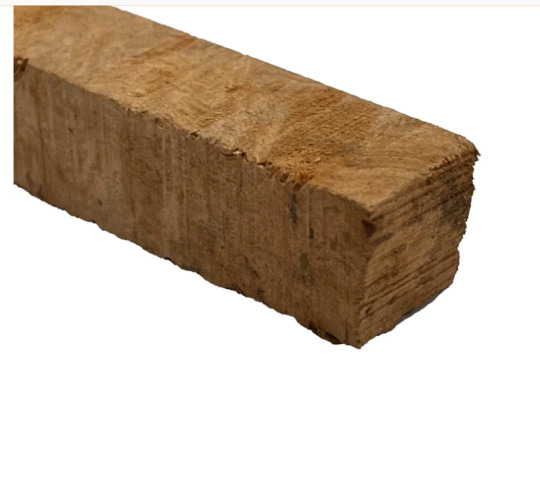
Gathering materials:
Gather all of the supplies and tools you'll need before you start creating. You'll need Crepe Myrtle Burl pen blanks, a lathe, chisels, various grit sandpaper, a mandrel, a drill, and pen kit components such as the mechanism, clip, and nib.

Select and prepare the pen blank.
Select a Crepe Myrtle Burl pen blank that matches your aesthetic tastes. Examine the blank for flaws or inconsistencies before cutting it to the correct length for your pen with a saw. To prevent the blank from cracking while drying, seal the ends with wax.

Drying Pen Blanks:
Crepe Myrtle Burl, like most burl woods, has a high moisture content. Allow the pen blank to dry completely before attempting to use it. To adapt, keep the blank in a cool, dry place for a few weeks. Patience is essential to getting a stable and beautiful finish.

Mounting the blank on the lathe:
After the pen blank has dried sufficiently, mount it to the lathe using a spur center and a live center. Take the time to correctly position the blank to prevent wobbling and uneven rotation.
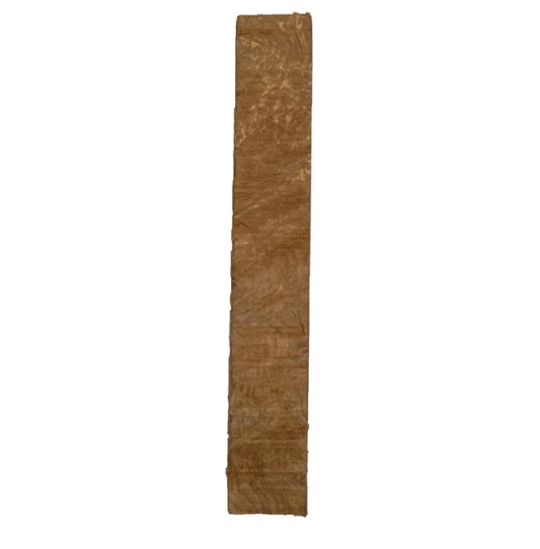
Shaping the Pen:
Turn on the lathe and form the Crepe Myrtle Burl pen blank with your preferred chisels. Allow the natural patterns of the burl to influence your design. Experiment with different cuts to bring forth the wood's distinct character. Maintain a low lathe speed for improved control.

Sand to perfection:
While shaping the pen, halt the lathe and sand the wood. Begin with coarse-grit sandpaper and work your way down to finer grits to get a smooth and polished finish. This method is required to unveil the wonderful patterns concealed behind the burl.

The Drill Pen's Components:
To drill the necessary holes in the pen blank, use a drill bit that is compatible with the pen kit components. Make sure to correctly measure and mark the locations to ensure that the pen components are aligned.

Assembly of the pen.
Now comes the interesting part: creating your Crepe Myrtle Burl pen. Insert the pen mechanism, clip, and nib, and carefully follow the instructions included with your pen. This phase brings your idea to life, changing it from a bare piece of wood into a working writing instrument.
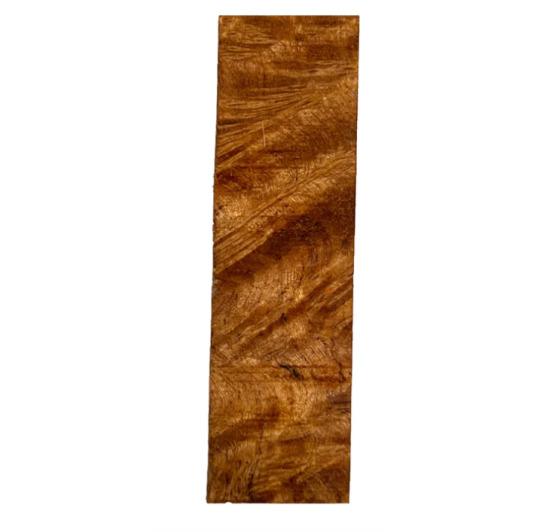
Finishing touches:
Apply a treatment to enhance the inherent beauty of the crepe myrtle burl. To obtain a glossy appearance, many woodworkers use a clear finish, such as a high-quality wood polish or a thin layer of cyanoacrylate (CA) adhesive. Allow the finish to dry completely before handling the pen.

Admire Your Work:
Take a moment to admire your Crepe Myrtle Burl pen's craftsmanship and unique features. Each swirl and pattern in the wood tells a story, giving your products a distinct appearance.
How to Take Care of Your Crepe Myrtle Burl Pen.
To ensure the brightness and life of your pen, keep it away from direct sunlight and harsh temperatures. To keep the pen bright, polish it on a regular basis with a soft cloth. With careful care, your Crepe Myrtle Burl pen can serve as a permanent reminder of your carpentry abilities.
Conclusion
Making a pen from Crepe Myrtle Burl pen blanks is a satisfying activity that combines carpentry abilities with artistic expression. Each stage, from raw material selection to turning, sanding, and assembly, contributes to the production of a distinct and personalized writing instrument. Accept the natural beauty of Crepe Myrtle Burl and let your imagination go wild as you begin your woodworking journey.
Check out for more information Exotic Wood Zone.
2 notes
·
View notes
Text
Cyanoacrylate
Monomer that undergoes polymerisation to form the adhesive
Super glue
2 notes
·
View notes
Text
2-Octyl Cyanoacrylate Adhesives Market: Rising Demand in Wound Closure

2-Octyl cyanoacrylate adhesives, commonly known as medical-grade super glue, are a type of fast-bonding adhesive that has found diverse applications in various industries. These adhesives are composed of 2-octyl cyanoacrylate, a chemical compound that rapidly polymerizes upon contact with moisture, making it ideal for bonding a wide range of materials. In recent years, the 2-Octyl Cyanoacrylate Adhesives Market has witnessed substantial growth owing to their exceptional bonding properties and versatility.
Market Scope and Growth
The market for 2-Octyl Cyanoacrylate Adhesives has seen significant expansion due to their wide scope of applications. These adhesives are predominantly used in the medical industry for wound closure and surgical procedures. Their ability to provide quick and secure bonding, along with biocompatibility, has made them a preferred choice for medical practitioners. Furthermore, these adhesives have also found their way into the automotive, electronics, and construction industries, further fueling 2-Octyl Cyanoacrylate Adhesives market growth.
Market Industry and Key Players
The 2-Octyl Cyanoacrylate Adhesives Market has a diverse industry landscape. Key players in this market include renowned adhesive manufacturers such as Ethicon Inc., Medline Industries, Inc., and B. Braun Melsungen AG, among others. These companies have played a pivotal role in shaping the industry by constantly innovating and developing advanced formulations to meet the growing demand for 2-octyl cyanoacrylate adhesives across various sectors.
Market Trends
The 2-Octyl Cyanoacrylate Adhesives Market is marked by several notable trends. One such trend is the increasing demand for these adhesives in the medical field, driven by the growing number of surgical procedures and the need for effective wound closure methods. Moreover, the market is witnessing a shift towards more environmentally friendly and biocompatible formulations, aligning with the global sustainability goals.
In conclusion, the 2-Octyl Cyanoacrylate Adhesives Market has experienced substantial growth and evolution, mainly due to the unique properties of 2-octyl cyanoacrylate and its wide array of applications. With continuous innovation and increasing awareness of the benefits these adhesives offer, the market is expected to keep expanding across various industries in the foreseeable future.
#2-Octyl Cyanoacrylate Adhesives Market#2-Octyl Cyanoacrylate Adhesives Market Growth#2-Octyl Cyanoacrylate Adhesives Market Trends
0 notes
Text
Adrenaline is a brand trademark for a chemical known as epinephrine. Some people also refer to norepinephrine as noradrenaline.
And Allen wrench is also known as a hex key.
A Band-Aid is also known as an adhesive bandage.
Bubble wrap is ironically exactly what it sounds like. As is sealed air. To call it anything else would be strange. To be completely candid I am not sure how they got trademark protection for that in the first place.
Chapstick is lip balm that is in the form of a glue stick. That is essentially all it is.
A frisbee is a flying disc if I recall correctly.
Google would be web search. As the verb.
A hula hoop would simply be a hoop.
Jacuzzi is a hot tub or a sauna depending on who you ask. It is not the traditional sauna. Some people just call it a sauna for some reason.
Jello is a mixture of gelatin and pectin as well as flavoring and dye. Sugar as well. Gelatine dessert.
I don't even know what the other word for jet ski is.
Kleenex is either a facial tissue or bathroom tissue.
A lava lamp is a lava lamp. Ain't no Way around that.
Ping pong is also known as table tennis.
Play-Doh maybe salt dough but I am not entirely sure. I believe it is something slightly different.
Plexiglass is clear acrylic sheet.
A popsicle is a frozen ice pop.
A post-it note is a sticky note.
Putt-Putt is mini golf.
Q-tips are cotton swabs.
Realtors are real estate agents.
Rollerblade is likely to be called something like tandem roller skate. That is because the wheels on a rollerblade are all in tandem as opposed to two rows of two.
Scotch tape is adhesive tape.
Sharpie is a felt-tip permanent alcohol marker.
Styrofoam is expanded polystyrene. Polystyrene is a plastic. Styrofoam is mostly air.
Super glue is known as CA glue or cyanoacrylate. Competitors include krazy glue and loctite.
Tupperware is beyond me. I don't know what else to call it.
Velcro is a hook and loop closure.
Please add to this anything I've missed
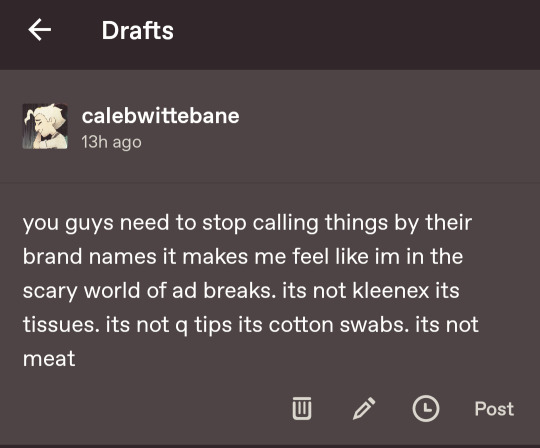
no idea where i was going with this but i abandoned it at the most disconcerting moment possible
103K notes
·
View notes